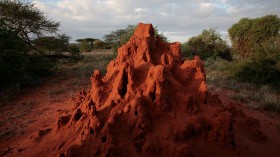New Zealand's South Island and parts of Australia saw the Aurora Australis, the southern counterpart of the Aurora Borealis, on Wednesday.
The natural light display and mysterious experience occurs when cosmic rays or solar wind interact with the earth's upper atmosphere.
In the southern hemisphere, aurora-watchers braved a cold winter night to catch images, BBC reported.
The lights are more rare in New Zealand and Australia than the northern version is in places like northern Scandinavia and Alaska. "We see it more as a treat, when you see an aurora that is strong enough. It's quite special. Many people wait years before they see them," Blair Pattinson, a photographer from Queenstown, New Zealand, told BBC.
However, the Australian government's Bureau of Meteorology's Space Forecast Centre says that the next two or three years could provide some of the best aurora viewing that Australia has seen in years. This is because the Earth is emerging from a solar maximum - the peak of its 11-year solar weather cycle, and increases in the geomagnetic activity and solar winds that form auroras could result.
"Historical data show that some of the best auroras have occurred in the declining phase of the solar maximum, which is more conducive to faster solar wind and intense geomagnetic activity," says Dr. Murray Parkinson, a Duty Forecaster at the Australian Space Forecast Centre.
The Australian Space Forecast Centre has an Aurora Patrol Camera here, based in Tasmania.
© 2024 NatureWorldNews.com All rights reserved. Do not reproduce without permission.





